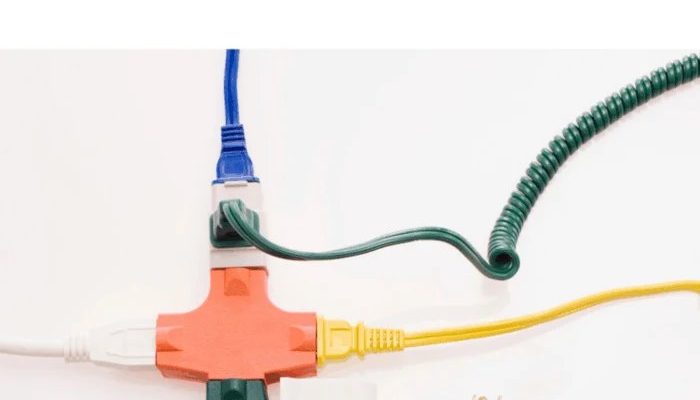
So, what exactly is a power surge? Think of it as a sudden increase in electrical voltage, kind of like a wave crashing onto the shore. This surge can damage or destroy your appliances by overwhelming their internal components. It’s important to understand how to safeguard your valuable devices from this kind of electrical chaos. Let’s explore practical ways to keep your electronics safe and sound.
Understanding Power Surges
Before diving into protection methods, it’s important to understand what a power surge is and where it comes from. Power surges can occur for several reasons. The most common culprits include lightning strikes, faulty wiring, or even the switching on or off of large appliances in your home. These spikes in voltage can reach thousands of volts, and your standard appliances are typically designed to handle only a limited amount of electricity.
Here’s the thing: when these surges happen, they can lead to a range of issues from complete failure to a slow degradation of the appliance over time. You might not notice anything right away, but over months or years, that surge can shorten an appliance’s lifespan. Protecting your appliances from this electrical turmoil is not just smart; it’s essential for maintaining a stable home.
Use Surge Protectors
A surge protector is your first line of defense against power surges. Think of it as a seatbelt for your appliances—it’s there to absorb the shock of those electrical spikes and keep your devices safe from harm. Not all surge protectors are created equal, so choosing the right one is key.
When shopping for surge protectors, look for units with:
- Joule rating: This number indicates how much energy the surge protector can absorb before it fails. A higher rating usually means better protection.
- Response time: The faster the protector responds to a surge, the better it is at protecting your devices.
- Built-in features: Some models come with indicators showing whether they’re still functioning properly.
Installing surge protectors at key points—like your main electrical panel and individual appliance locations—can provide a solid shield against unexpected surges.
Unplug Appliances During Storms
You might think this is old-school advice, but unplugging your appliances during storms is a simple yet effective way to prevent damage. Lightning strikes are a major source of power surges, and if you know a storm is brewing, taking a few minutes to unplug can save you a lot of headaches later.
Let me explain a bit about why this works. When a lightning strike hits a power line, it can send a surge through the electrical system. If your refrigerator is plugged in during this event, it’s drinking in that excess voltage. Unplugging it, however, disconnects it from the electrical grid, which means it’s like putting on a protective suit against that incoming wave of electricity.
Consider Whole-House Surge Protectors
For homeowners looking for an extra layer of protection, a whole-house surge protector might be the way to go. These are installed directly into your home’s electrical panel and can offer comprehensive coverage. Imagine them as a bouncer at a club—keeping the wild surges out before they even have a chance to enter your home.
Whole-house surge protectors can protect multiple appliances at once and are especially beneficial if you live in an area prone to frequent storms. This setup works by diverting excess voltage to the ground, ensuring that your appliances receive only the power they need.
However, it’s not a set-it-and-forget-it solution. You’ll want to ensure it’s functioning properly and replace it according to the manufacturer’s recommendations.
Maintain Your Appliances
Regular maintenance of your appliances can also play a role in surge protection. Think of it like regular check-ups for your car—if you take care of minor issues, you’re less likely to face major problems down the line. Keeping your appliances in good shape means they’re more capable of handling electrical fluctuations.
Here are a few maintenance tips:
- Clean filters and vents: Clogged filters can cause your appliances to work harder, making them more vulnerable to power surges.
- Check for frayed cords: Damaged power cords can create points of weakness during surges. Regularly inspect and replace them as needed.
- Keep appliances cool: Overheating can weaken an appliance’s internal components, making them more susceptible to damage.
Being proactive about maintenance can help you catch minor issues before they become costly repairs or replacements.
Install a Voltage Monitor
Installing a voltage monitor can provide real-time insights into your home’s electrical system. Think of it as a security camera for your electricity. It helps you keep an eye on voltage levels and alerts you when surges occur, which can help you learn when to unplug appliances.
A voltage monitor can also help you understand patterns in your electrical system, alerting you to potential issues that might lead to surges. This information empowers you to take proactive measures and maintain your appliances even better.
Educate Your Family
Lastly, educating your family about the importance of protecting appliances is essential. Imagine a team going into battle—every member needs to know their role for the mission to succeed. Make sure everyone understands how power surges work and the simple steps they can take to protect your household devices.
You could create a family checklist for storms or a routine for unplugging devices that aren’t in use. It’s not just about protecting appliances; it’s about creating a culture of care within your home.
Final Thoughts
Protecting your appliances from power surges in zip code 33104 doesn’t have to be complicated. With a bit of effort—like using surge protectors, unplugging during storms, and maintaining your devices—you’ll be well on your way to safeguarding your home. It’s all about being prepared and taking the right steps to ensure your valuable appliances serve you well for years to come. So, take a moment to look around your home, assess your appliances, and put some of these protective measures into action. Your future self will thank you!
